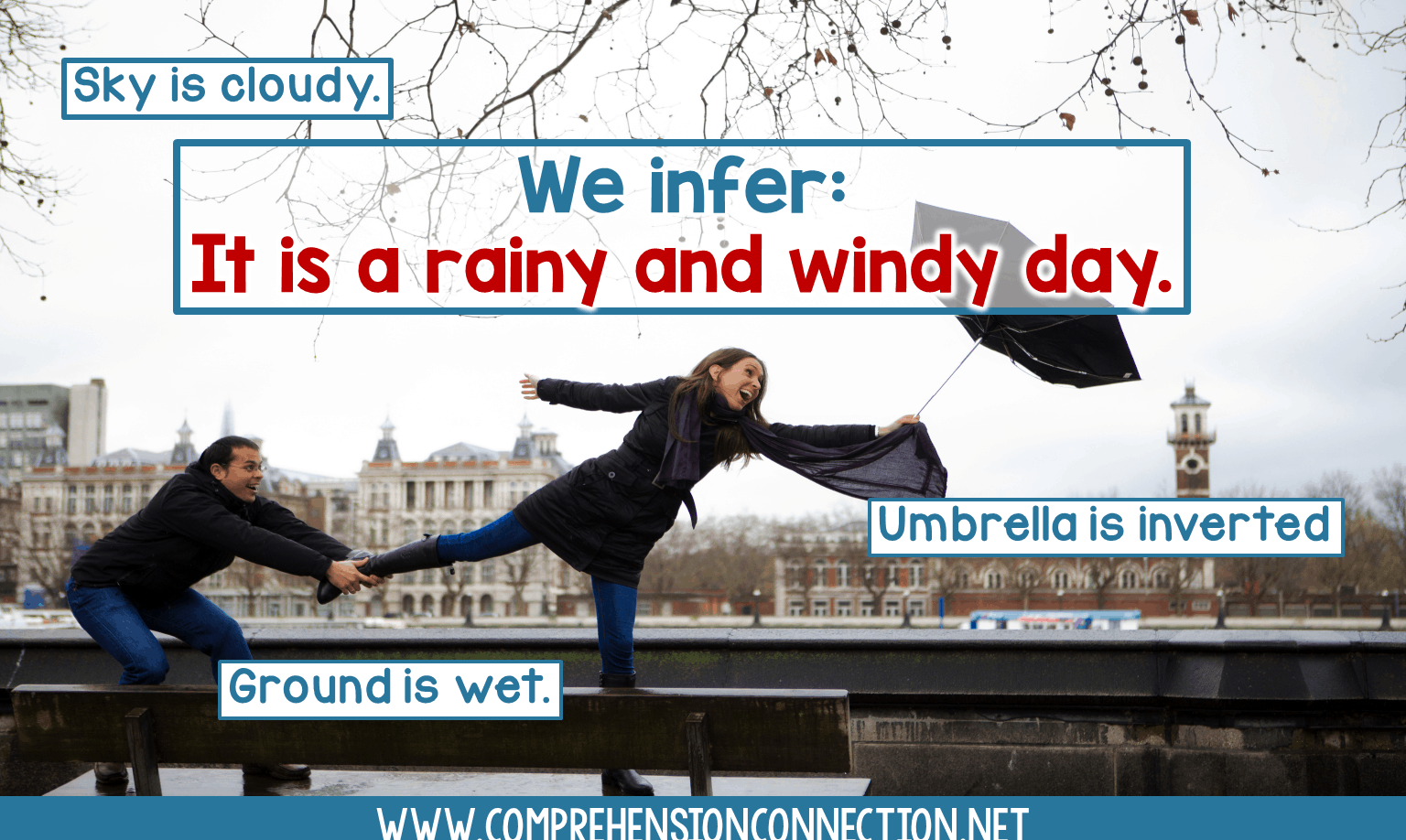What Does Drawing Conclusion Mean







Do you find it difficult to explain the difference between making inferences and drawing conclusions? If not, you are not alone. At lunch yesterday, this was a big debate among literacy specialists and instructional coaches. Are they synonyms? Is there a slight difference? Do you use inferring to draw conclusions? Today, I'm going to explore these and hopefully provide you with clarification and a next step for instruction.
The Difference with Drawing Conclusions and Making Inferences
Inferences:
Making inferences is the process of figuring out missing information from information that IS included . Inferences can be made with pictures, with characters, with plot, with the setting, and even with vocabulary. To infer is a thinking process of reading between the lines. We can use pictures and text clues to infer, and making inferences are more situational.
Conclusions:
Conclusions are the judgments or decisions reached based on information learned. It requires reasoning or deep thinking and observation skills . I think of drawing conclusions as solving a mystery. Drawing conclusions is deeper than an inference. In fact, making inferences helps us draw conclusions.
Take the title image with the little guy sitting in the suitcase. Where is he going? How can you tell? Well, this is a really fun way to give a concrete example to kids. Most of us have a suitcase on hand, so fill it with items you'd use at a beach. Pull one item out at a time, and let the kids make simple inferences about the activities you'll do on your vacation. Then, discuss the conclusions they can make based on all of the evidence in the suitcase and based on your discussions.
Examples of Making Inferences

What we infer:
In this example, the facts we see are that the sky is cloudy, the ground is wet, and the umbrella is inverted. These facts indicate that it's rainy because the ground's wet and because she has an umbrella. We can infer that it is windy based on the fact that the man is holding on to the woman and because the umbrella is inverted.
What we conclude:
From this same photo, you could also gather clues for a conclusion. You might wonder, "How will the weather impact the couples plans later in the day?" The couple has plans to go hiking. Well, we'd conclude that they'll cancel their plans because it will be muddy and impossible to hike without having their shoes stuck in the mud.

What we infer:
In this next example, the facts we see are that the the boys are playing on a slip and slide. They are wearing bathing suits, and water is flowing over the plastic sheet. These facts indicate that it must be warm and sunny because I see a glow over the boys, and they're covered in water. I also infer that they are having fun since they are smiling and look happy. Finally, I infer that this cools them off since the water splashes up on them.
What we conclude:
Conclusions from this photo is that many children like to play on slip and slides in the summer because they cool you off, are fun, and work well with a group of kids. If it started to rain, we'd probably conclude that the boys would go inside. Why? Well, there might be a storm. It might also get slippery running on the grass. Another conclusion if rain moved in might be that the boys would prefer playing an indoor game. Why? Well, without the sun, it would get cooler and wouldn't feel comfortable being wet in a bathing suit.
Final Thoughts on Drawing Conclusions and Making Inferences
So, the difference between an inference and a conclusion is in the depth. Conclusions require a deeper understanding than an inference and clues that are gathered across the text or over time.
As you teach these skills, pairing them might clarify the difference for your students. I'd recommend working with mentor texts to model the difference. Here is a collection you might start with. Be sure to search on Pinterest for additional materials to go with these titles. Other bloggers have written about them.


As you practice, you can refer to the anchor chart to the right and use it with these texts, I've also included organizers that you can use for recording the facts, knowledge, inferences and conclusions. You might even use the same book for each purpose just to find examples of each. This skill will take lots of practice as it's probably the toughest for many kids to master since fourth and fifth graders are still at the concrete thinking stage.
To access the anchor charts and lesson materials I'm sharing, please sign up for my email list using the form below. Teaching the difference between an inference and a conclusion is really tough. I hope these suggestions will help break it down for your kids.
Resources You Might Like:
Need a fun station activity for additional practice? These paper bag mini books are lots of fun. They can be started in your small groups and sent to stations for finishing.
Making Inferences Paper Bag Book
Drawing Conclusions Paper Bag Book

I hope you'll have a fantastic weekend and will come back soon. Don't forget to download the freebie above!

What Does Drawing Conclusion Mean
Source: https://www.comprehensionconnection.net/2019/03/exploring-difference-between-making.html
Posted by: quallssammat.blogspot.com

0 Response to "What Does Drawing Conclusion Mean"
Post a Comment